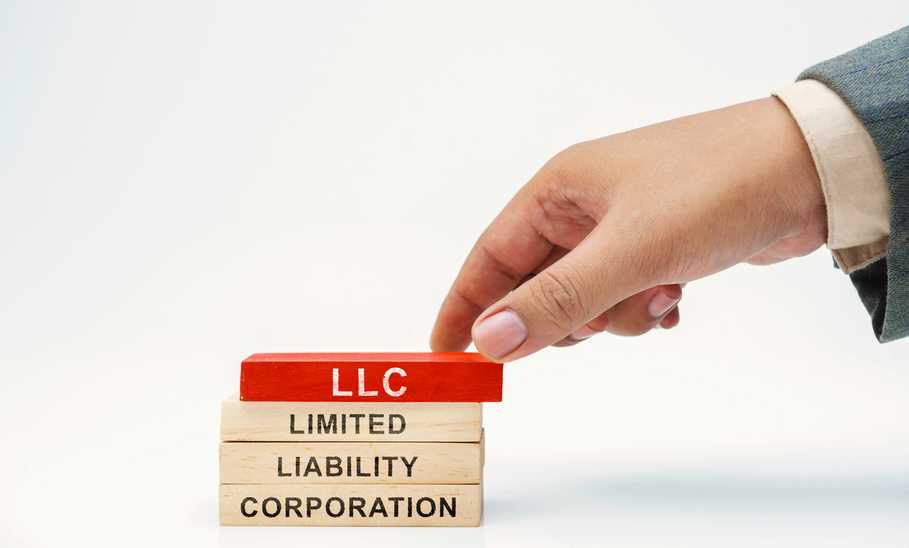How To Start An LLC in 10 Steps


Our evaluations and opinions are not influenced by our advertising relationships, but we may earn a commission from our partners’ links. This content is created by TIME Stamped, under TIME’s direction and produced in accordance with TIME’s editorial guidelines and overseen by TIME’s editorial staff. Learn more about it.
Before starting a business, you’ll need to decide on a business structure. There are several reasons why you might want to set up a limited liability company (LLC), one of five legal business structures when starting a business.
An LLC can be structured for a single member or multiple members, and it protects individual members from personal liability. Here is a 10-step guide to setting up your LLC.

Found is a financial technology company, not a bank. Business banking services are provided by Piermont Bank, Member FDIC. The funds in your account are FDIC-insured up to $250,000 per depositor for each account ownership category. The Found Mastercard Business debit card is issued by Piermont Bank pursuant to a license from Mastercard Inc. and may be used everywhere Mastercard debit cards are accepted.
*Advanced, optional add-on bookkeeping software available with a Found Plus subscription for $19.99/month or $1149.99/year. There are no monthly account maintenance fees, but transactional fees for wires, instant transfers, and ATM apply. Read more here.
First, you should decide on a business name that describes the type of business you plan to carry out with your LLC. States have requirements for your LLC’s name. For example, you cannot have a name that is too similar to any other LLC in the state. Most states also require that the terms “LLC” or “Limited Liability Company” appear in the business name. You can also create a DBA (“Doing Business As”) if you wish to conduct business under a different name.
When you form an LLC, you will be required to designate a registered agent. A registered agent is a person who is solely responsible for receiving and processing legal documents related to the LLC. You can designate yourself, a trusted colleague, a lawyer, or anyone else, as long as they have a physical U.S. address and can process mail in a time-sensitive manner.
Each state has its own version of the Articles of Organization form. Items that are commonly found on an Articles of Organization include:
You will need to file the Articles of Organization with your Secretary of State or another state agency that handles business filings.
You should get a copy of your filed and stamped Articles of Organization from the Secretary of State. Be sure to keep it in a safe location.
An operating agreement outlines each owner’s percentage ownership in the LLC. It may also include important items such as:
There may be ongoing requirements to keep your LLC active and in good standing with the state. Most states require that you file an annual report and pay a fee to keep your LLC active. The fees vary by state. Be sure to file by your state’s due date to keep your account in good standing and avoid late fees and penalties. Items on your annual report may include:
An employer identification number (EIN) is a taxpayer ID specific to a business. You will need an EIN to file and pay taxes for your LLC, hire and pay contractors and employees, and open a business bank account. You can apply for an EIN on the IRS website.
Opening a business bank account is a critical step in the LLC setup process. Because your LLC provides protection for your personal assets, you’ll want to keep your business assets separate from your personal assets. Found is one example of an easy-to-use business checking account. You can also access its tax and bookkeeping tools to track your business revenue and expenses—saving you time and money.

Your LLC will need to obtain several licenses and permits based on your location. You may have city, county, state, or federal permits. The Small Business Administration (SBA) lists federal licenses and permits you may be required to obtain based on your business activities. Be sure to contact your local municipality to figure out which local licenses and permits are required. You will likely have to display the documents in a prominent location within your business. Most licenses will need to be renewed annually, as well.
As with any major financial venture, you should talk to your tax professional for tax planning advice. They will want a copy of your EIN and access to your bookkeeping. You may also choose to outsource your bookkeeping to them. Read below for more details about the tax structure for LLCs.
There is no hard-and-fast rule as to when you should set up an LLC for your business or side hustle. As a single-member pass-through LLC, you would still pay taxes on your Schedule C when you file your Form 1040—just as you would as a sole proprietor. However, if your business venture carries some risk, it may be worth setting up an LLC for personal liability protection. If you’re going into business with a partner, an LLC is a great option.
There are three main types of LLCs:
For a single owner, an LLC is a good option if you want personal liability protection from business activities. For multiple owners, an LLC avoids the double taxation of a corporation, doesn’t have the strict qualification rules of an S Corporation, and provides more liability protection than most types of partnerships—although some service professions are not allowed to use an LLC as a business structure.
The biggest advantage to an LLC is the personal liability protection it offers its members. A major disadvantage includes the start-up fees and ongoing compliance reports and fees. There is significantly less reporting and no start-up fee as a sole proprietor.
A single-member LLC files taxes like a sole proprietor unless it files Form 8832 and opts to file taxes as a corporation. The member reports the LLC’s business activities on their personal Form 1040, U.S. Individual Income Tax Return, Schedule C, and Profit or Loss from Business. A multi-member LLC files taxes as a partnership unless they file Form 8832 and opt to file taxes as a C Corporation or S Corporation.
If the LLC is treated as a partnership, it will file an informational Form 1065, U.S. Return of Partnership Income, with the IRS. No tax is paid directly by the LLC. The Form 1065 creates Schedule K-1s, Partner’s Share of Income, Deductions, Credits, etc, which members use to report their share of income on the Form 1040. The members pay taxes on their own share of the LLC’s income.
If the LLC opts to file and pay taxes as a C Corporation, it will file Form 1120, U.S. Corporation Income Tax Return. If the LLC opts to file taxes as an S Corporation, it will file Form 1120-S, U.S. Income Tax Return for an S Corporation. Form 1120-S creates K-1s, and members report their share of income and file taxes individually on Form 1040. Filing taxes as a partnership or S Corporation is considered to be a passthrough because the income passes through to the members who then pay taxes on their share of the LLC’s income.
Because a multi-member LLC can be set up as a partnership, S Corp, or C Corp for tax-filing purposes, you should understand the tax impact of filing each of these ways. The partnership and S Corp passthrough options bypass double taxation—unlike a C Corp—because taxes are only paid at the member level. For employment-tax purposes, members who also work in the business are treated as owners under partnership rules and as employees under S Corp or C Corp rules.
Members taxed like a partnership or S Corp are limited in the amount they are able to deduct for life insurance, medical, and retirement benefits. There is no such restriction for an LLC filing as a C Corp. As always, you should speak with your tax professional about your specific situation prior to changing your tax filing method on Form 8832.
Follow the steps above to make sure you have covered all of the required legal filings for your LLC. Think through all the implications of various options for setting up your LLC, especially if it’s a multi-member LLC.
If the process still seems daunting, you can use the help of an online business formation company such as LegalZoom to set up your LLC. There are several options to get your LLC started.
You can use its basic plan for free if you want to do most of the work yourself. It gives you access to your state’s required forms and checks your business name against others in your state to make sure it’s available. The Pro plan, for $249, includes everything in the basic plan, plus the setup of an operating agreement and EIN.
For more assistance, choose the Assist plan, where an experienced attorney will provide you with guidance and unlimited 30-minute consultations within the first 30 days.

To maintain a good standing for your LLC:
According to LegalZoom, it typically takes between one to two weeks to establish an LLC.
Upon initial setup, you will have to pay formation fees for your LLC—ranging from $35 to $500 depending on the state. There may also be costs involved with filing your annual report if one is required in your state.
Yes, a registered agent is required for an LLC in order to have one designated person who is responsible for the LLC’s legal correspondence.
An LLC operating agreement outlines the company’s key financial and operating decisions. It provides the members with protection from personal liability for LLC activities.
An LLC is taxed as a passthrough entity unless the members elect otherwise. Income from a corporation is subject to double taxation: It is taxed at the corporate level and again when the owner receives wages from the corporation. An LLC is not recognized on an international level, but a corporation is. Both allow unlimited members or shareholders, and both offer their owners personal liability protection.
At a bare minimum, you should have the funds to form your LLC—typically $35 to $500 based on your state. Don’t forget the ongoing costs of business licenses and annual reports. The total may add up to thousands of dollars. If you don’t have funds readily available, consider a business loan from the SBA. After six months in business, you may also be able to open a business credit card.
The information presented here is created by TIME Stamped and overseen by TIME editorial staff. To learn more, see our About Us page.



